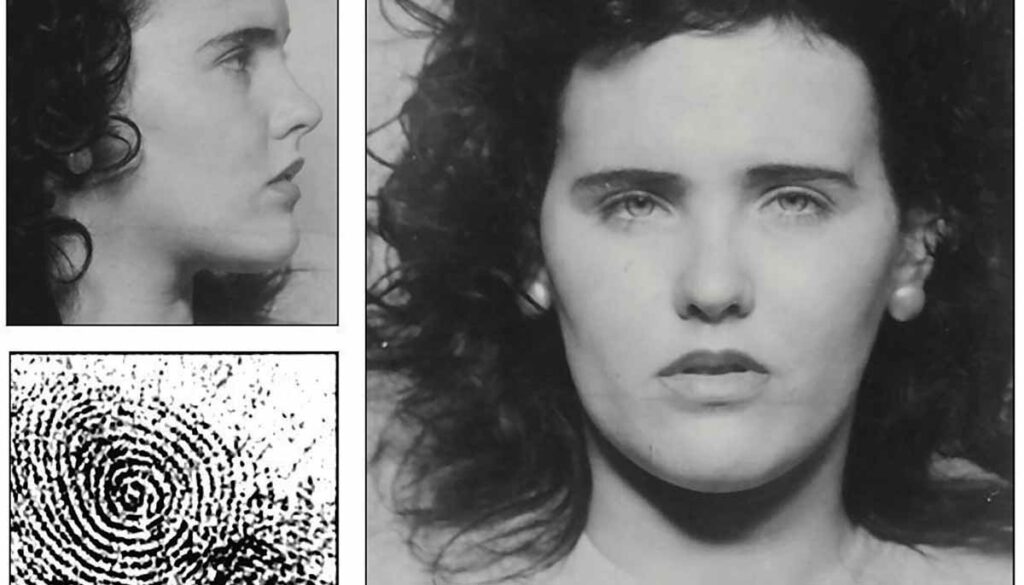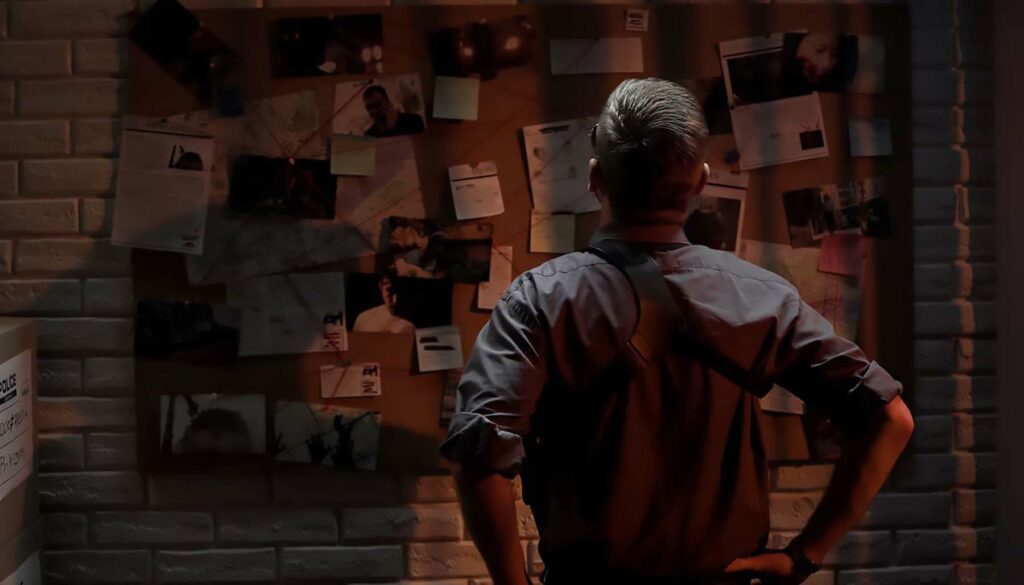On January 14, 1947, a woman walking through a Los Angeles neighborhood made a grisly discovery. She found the body of a woman, recently killed, posed in a bizarre way in a vacant lot. The case quickly became a national sensation due to the grisly nature of the crime scene and the victim’s youth and beauty. While the victim’s name was Elizabeth Short, the media quickly dubbed the crime “The Black Dahlia Murder”.
In the 1940s, true crime stories were all the rage for local newspapers. The media had a habit of giving exciting-sounding names to murder cases to help drum up readership. Elizabeth Short’s murder was called the “Black Dahlia” because she had dyed-black hair and was known for wearing sleek, all-black attire. This mysterious-sounding name only further drove interest in the case.
Despite a huge amount of national coverage and numerous pieces of physical evidence, the crime has gone unsolved for over 80 years. Still, some amateur sleuths think that there’s an obvious suspect who went overlooked in the initial investigation. Let’s take a closer look at one of the most gruesome unsolved murders in American history.
Elizabeth Short

The woman who would become famous in death was Elizabeth Short, a native of New England who split her adult life between Miami and Southern California. She was born in Boston, Massachusetts, in 1924 to a middle-class family. Her father lost his life’s savings in the 1929 Stock Market Crash and faked his death before relocating to California.
Short was diagnosed with bronchitis and asthma at age 15, and the doctors prescribed her a move to a milder climate. As such, she spent most of her time in Miami after this, though she eventually reconnected with her father and moved to California for some of her later teen years.
She was arrested in 1943 for underage drinking. This resulted in the police in Santa Barbara having her picture and fingerprint on file, which would be critical in identifying her swiftly following her murder.
For the final few months of her life, Short lived in and around Los Angeles. Some sources report that she was an aspiring actress, but there’s not much hard evidence to support this claim. The media sensationalized her activity in LA shortly before her death, characterizing her as an “adventuress” and creating an air of promiscuity that isn’t based on fact.
Murder and Discovery
Short was last seen alive on January 9, 1947. A man she had been dating, Robert “Red” Manley, took her on a trip to San Diego in early January and dropped her back off at the Biltmore Hotel in LA after their trip. In a twist that added some scandal to the case, Manley had been married at the time of their trip. Manley maintained that the two were platonic friends.
The next time Short was seen was on the morning of January 15, 1947, when a woman named Betty Bersinger discovered her mutilated remains. Bersinger initially thought the ghostly-white corpse was a mannequin and disregarded it. Upon discovering it was a body, she rushed to a nearby resident’s home to phone the police.
The brutal crime scene drew a large crowd. Short’s body was bisected at the waist, and her face had been cut at the corners of the mouth. There were several lacerations on her body, and she appeared to have been completely exsanguinated–drained of her blood. Her autopsy revealed that whoever had killed her was likely surgically talented. The lacerations all over her body were very clean and precise.
The Nature of the Crime

Warning: the following section contains an in-depth description of the state in which Elizabeth Short’s body was discovered. Reader discretion is advised.
The public was mortified and captivated by the crime, primarily due to the alarming level of mutilation on display with Short’s remains. The killer appeared to have “posed” her, in a somewhat artistic manner, leaving her arms above her head, slightly bent at the elbows, and her legs spread.
The superficial lacerations had taken some flesh away from her thighs and chest, giving her remains a bizarre patchwork appearance. The “Glasgow smile” her corpse bore was apparently inflicted while she was alive. In fact, the coroner concluded that blood loss from these facial injuries might have been the primary cause of her death.
Short’s intestines had been neatly arranged under the lower half of her body, giving the corpse the “doll-like” appearance observed by Bessinger. The autopsy also revealed that Short seemed to have been bound for a number of hours before her death. Evidence gathered from her body suggested she died roughly ten hours before her remains were discovered. All of this further stoked public speculation and sensationalization of her murder.
Sensational Story
The case had all the elements it needed to be a huge sensation. A young, attractive woman who had seemingly come to Hollywood to become a star was scooped up by a deranged, surgical murderer. Her body was put on display for all to see. Was it a symptom of the town’s corruption, or a twisted commentary on it? The newspapers–and their readers–ate the case up.
This furor didn’t make it any easier for the detectives trying to solve the case. Someone suspected to be her murderer sent a series of cryptic, taunting letters to the police in the weeks after Short’s body was discovered. The letters contained her personal effects, items like her birth certificate, address book, and business cards.
The letters sparked increased interest in the story, which remained front-page news in LA for over a month after Short’s body was discovered. Police, likewise, employed a huge force to investigate the case: at least 700 different law enforcement officers worked on the case in its initial stages. After interviewing over 150 suspects, the police found the case hit a wall. The lack of advanced forensic science in 1947 made a more in-depth investigation impossible–but that hasn’t stopped amateur sleuths from trying their hands at the case.
Theories

Several potential suspects were interviewed by police, but only a few merit attention from amateur investigators this many years after the murder. The first is one we’ve already mentioned–Red Manley. Manley was the last known person to see Short alive, and his status as a married man who had been dating a pretty young woman in LA made him an instant suspect for the police.
However, after taking a polygraph test and numerous interviews with police, Manley was cleared of any suspicion. His lack of hesitation in speaking with law enforcement following the murder assuaged police fears that he might have had any involvement in Short’s murder.
An investigator who worked on the original case, Ralph Asdel, would later tell reporters that he believes he inadvertently spotted Short’s murderer early in the investigation. Onlookers from the site where Short’s body was found reported seeing a man driving a black car near the vacant lot. Asdel remembers seeing a man who matched that description who had recently repainted his vehicle, which was also the same make and model that the onlookers reported seeing. Sadly, Asdel was unable to confront this suspect as he had nothing more than a hunch to go on.
George Hodel
One of the most compelling theories in the case is that a Hollywood-based surgeon named James Hodel was responsible for the murder. Bizarrely enough, Hodel was put forth as a suspect by former LA-area detective Steve Hodel, his son. Steve wrote that his father George was a manipulative and cruel man who was obsessed with the human body and “breezed” through medical school.
George Hodel was an avid fan of the post-modern artist Man Ray, and some amateur investigators have pointed out some uncanny resemblances between Man Ray’s art and the state of Short’s corpse. Steve Hodel argued that his father may have killed Short and posed her in an attempt to create a work of “art”.
Hodel was never formally charged with a crime in the murder of Elizabeth Short, but he was charged in another alarming case: his daughter, Tamar Hodel, accused him of assaulting her. He was tried for this crime but acquitted after family members claimed Tamar was lying. George Hodel fled the US in 1950, living in the Philippines for 40 years before returning in 1990. He died of old age in 1991.
The Mystery Lingers

Despite the strong suspicion placed on George Hodel by both his own family and amateur sleuths, the infamous “Black Dahlia” murder remains unsolved. The air of mystery surrounding the case and the eerie state Short’s body was left in have helped the crime maintain a place in popular culture.
There have been numerous films and TV series based on the murder. Fiction authors have tried to divine what could have happened to Short in the winter of 1947, imagining brutal and sordid ways she could have met her final fate. In the end, investigators may never know what really happened to Elizabeth Short. For better or worse, her name will live on–even if her story ended far too soon.












